Beat the Heat: Tips for Training this Summer
Summer is setting in, take precautions when adjusting to training in the heat.
Even with the occasional summer thunderstorms, temperatures in Central Texas consistently hit the mid-90s. High temperatures won’t keep you from training, so you need to make some adjustments. Training in the heat does have some benefits, but being smart and altering your schedule/plan will help uphold your training regimen, and continue without any bumps. Incorporate these 5 tips for training in the heat to be prepared for the Virtual CapTex Tri, or your next race.
Ease Into It
Give yourself some time to get used to the temperature adjustment. Although some athletes have less trouble adapting to training in warmer temps, that may not be the case for you. If you know you struggle with adapting to training in the heat, it’s important to take baby steps. At first, shorten your runs or rides as you adapt to handle the heat. Then, work your way up to the distance you are training for.
Listen to Your Body
You know your body better than anyone. Paying attention to the way you feel while out on a run or ride is the first thing to do in establishing a baseline for keeping you cool as the temperatures soar during your training. Early signs and symptoms of heat illness include fatigue, discomfort, lightheadedness, disorientation, and nausea. This will be your indicator of how you need to adjust the following in order to keep up with your tri training during these hot upcoming summer months.
Hydrate, Hydrate, Hydrate!
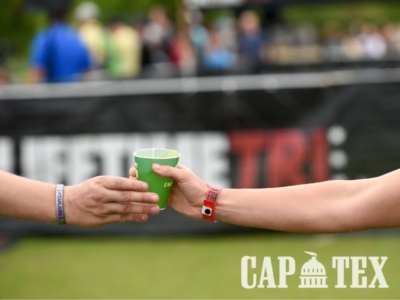
Hydrating on the CapTex Tri course!
This is the most obvious and most over-looked tip for training in the heat. You know to hydrate in the summer months, but you don’t always do it. Perhaps you get caught up and forget during your day-to-day schedule. Even if you are hydrating, it may not be enough. It’s recommended that we drink 64 ounces of water a day. In the summer months that should increase, especially when training in the heat. Your body is losing fluids and you need to make it a priority to replace them. Don’t just drink water either, incorporate an electrolyte-enhanced drink. Alternate between water and electrolytes. If you’re training in the heat you should aim for no less than 100 ounces of water/electrolytes every day. So start early, and drink up!
Train in the mornings/evenings
It’s no secret that the hottest part of the day is noon – 5:00 p.m. If you can avoid training during that timeframe – do it! Your training should occur earlier in the mornings or later in the evenings during the summer months. Training early in the morning before work is your best bet. That’s the coolest part of the day. For those of you who love your sleep, try to move your workouts to an evening time like 7:00 – 8:00 p.m. It’ll be warm, just not as hot as midday. Bonus – without the sun angled directly over you like it would be in the middle of the day, there will be more shade on your run or ride.
Dress to Sweat
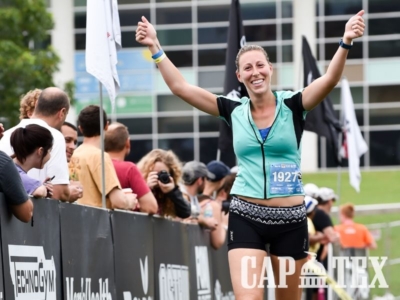
Wear light, breathable clothing to combat the heat!
You’re going to sweat, so aim to wear light-colored, breathable clothing when training. Darker colored clothing attracts and absorbs more of the sun’s heat. Cotton shirts and shorts absorb and carry sweat, and can weigh you down. Wear light-colored, breathable clothing when training in the heat. The lighter colors will reflect the sunlight and not absorb as much heat. The same goes for breathable clothing. The fabric is less absorbant so you’ll wick away sweat and prevent your clothes from weighing you down. This allows your body to stay cool and work more efficiently.
Run/bike on the Trails
Hit the trails! The pavement’s temperature can soar as high as 140 degrees when you’re running or cycling. This heat can last well into the evening. Visit some of the many local trails for your next run or ride. The shade from the trees helps keep the temperatures down. There’s often little-to-no vehicle traffic. The ground is softer than the hot concrete. Often times there’s a creek or river nearby that you can jump in if needed. Check out some favorite shaded spots to train from Jack’s Generic Tri. Bonus – the trails will make you a better runner/cyclist!
As you can see, there are many ways to beat the summer heat and stay in shape. Use these tips to stay cool this summer and continue to tackle your triathlon goals.

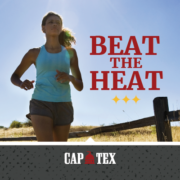





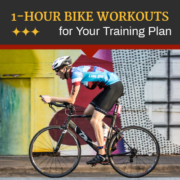
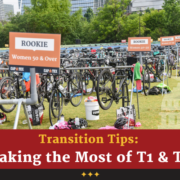 captextri.com
captextri.com 

